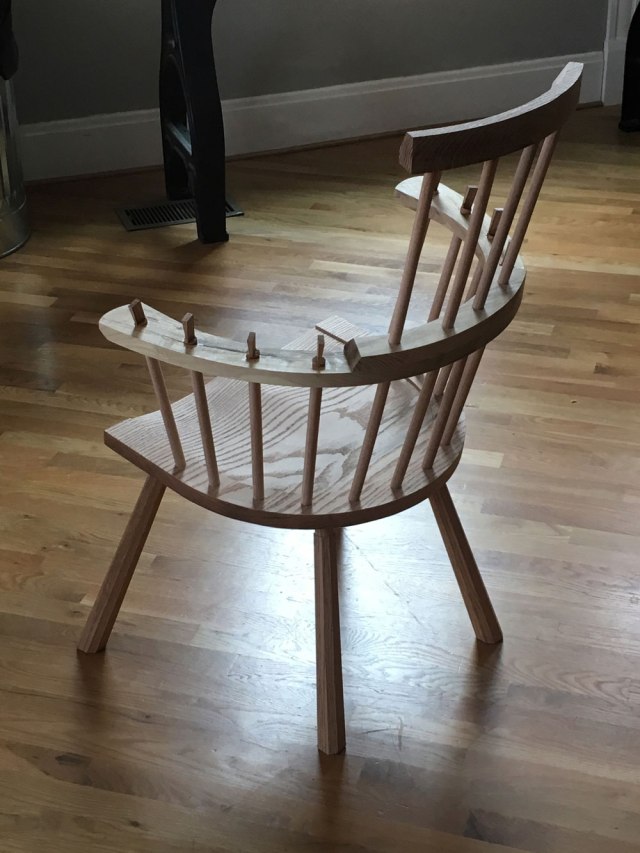Bringing Jonathan Fisher Back to Life –
Editor’s Note: One of the many exciting books in the works at Lost Art Press is Joshua Klein’s book on Jonathan Fisher (more on Fisher here). Fisher was an ingenious American colonial polymath and woodworker who could fashion almost anything out of wood – a clock, a lathe turned by a windmill, his own tools, furniture for his town, convertible beds and on and on.
This project will be in our hands for editing soon and you’re going to hear a lot more about Fisher and Klein’s personal journey of discovery in researching Fisher. In the meantime, here’s a crazy story about the lengths Joshua is going to for the book.
— Christopher Schwarz

I remember talking with Don Williams about his struggles working on the H.O. Studley book, “Virtuoso: The Tool Cabinet and Workbench of Henry O. Studley.” He said the challenge was unearthing information about who H.O. Studley was. Don searched far and wide to understand the story of this man and his legendary tool cabinet. Studley left no paper trail of letters describing his work, little if any of his other woodwork has been identified and much of the research required extensive traveling. Talk about a complicated project!
When Don visited my wife and me in Maine a few years ago, I took him through the Jonathan Fisher house. As we walked around the house looking at artifacts, we discussed the fact that the Fisher story has the opposite problem. Fisher’s house (five minutes from my own) is full of furniture, tools, paintings, journals, letters, etc. The archives are brimming with tiny little notebooks full of 18th- and 19th-century script, most of which was written in a shorthand he developed at Harvard. There are boxes of drawings, historic photographs and archaeological findings. Digesting this enormous body of information in order to discern a cogent furniture-making narrative would be an enormous task. If Studley was about accumulation, Fisher is about distillation.
As I was writing the chapter about Jonathan Fisher’s barn workshop, I was presented with the task of bringing together all of these artifacts into one scene. I know them all so well and am so immersed in the journals that I could picture it in my mind. His “tool closet” of planes, his lathe in the background, the sheep in the corner, his bald head and the “grave” demeanor on his face. It was almost like I was there. The problem was to describe it to the reader. Although I explained the setting as best as I could, I realized that looking at photographs of objects was not going to be enough. I wanted the reader to see things in context.
To my knowledge, no one writing a historic monograph on a pre-industrial furniture maker has ever commissioned an artist to recreate a workshop scene. Usually, there just isn’t enough information to create such a thing. But because almost everything from Fisher’s shop is either extant or we have paintings or photographs of it, I knew it was possible.
Is it necessary? No. Is it awesome? YES!
Fortunately, I’m working with Chris and John on this book so, of course, they were game. I contacted my first-choice artist, Jessica Roux, from Brooklyn, N.Y. I’ve admired Jessica’s work since seeing it on the covers of Taproot magazine. It struck me right away because it reminded me of Fisher’s own balance of academic training and folk whimsy. Also, the way she uses color and texture reminded of the many 18th/19th-century workshop paintings we all drool over. Her aesthetic vision seemed just right for this.
When I explained the project to Jessica, she was interested. I expressed how important historical accuracy was and she assured me she was used to several rounds of back and forth with authors to make sure things were conveyed correctly.
With the green light, I assembled images of the tools, historic paintings and Fisher himself and sent them along with a rough compositional sketch as a starting point. Then the back and forth began. During the last three weeks, Jessica has been refining a sketch that Chris and I will approve before she creates the final image. The color will happen in a magical digital process I look forward to learning more about.
We hope this artwork will bring Jonathan Fisher to life for you as you read this book. His life was one full of beauty, drama and lots of wood shavings — I can’t wait to share this unbelievable story.
The manuscript will be in Chris’ hands in a matter of weeks. Stay tuned.
— Joshua Klein, Mortise & Tenon magazine



